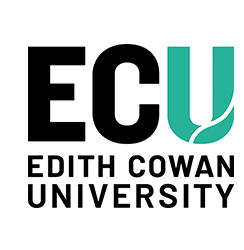Authors/Creators
Eric Adua, Edith Cowan UniversityFollow
Emmanuel A. Kolog
Ebenezer Afrifa-Yamoah, Edith Cowan UniversityFollow
Bright Amankwah
Christian Obirikorang
Enoch O. Anto, Edith Cowan UniversityFollow
Emmanuel Acheampong, Edith Cowan UniversityFollow
Wei Wang, Edith Cowan UniversityFollow
Antonia Y. Tetteh
Author Identifier (ORCID)
Ebenezer Afrifa-Yamoah
ORCID : 0000-0003-1741-9249
Wei Wang
ORCID : 0000-0002-1430-1360
Abstract
Background: Accurate prediction and early recognition of type II diabetes (T2DM) will lead to timely and meaningful interventions, while preventing T2DM associated complications. In this context, machine learning (ML) is promising, as it can transform vast amount of T2DM data into clinically relevant information. This study compares multiple ML techniques for predictive modelling based on different T2DM associated variables in an African population, Ghana. Methods: The study involved 219 T2DM patients and 219 healthy individuals who were recruited from the hospital and the local community, respectively. Anthropometric and biochemical information including glycated haemoglobin (HbA1c), body mass index (BMI), blood pressure, fasting blood sugar (FBS), serum lipids [(total cholesterol (TC), triglycerides (TG), high and low-density lipoprotein cholesterol (HDL-c and LDL-c)] were collected. From this data, four ML classification algorithms including Naïve-Bayes (NB), K-Nearest Neighbor (KNN), Support Vector Machines (SVM) and Decision Tree (DT) were used to predict T2DM. Precision, Recall, F1-Scores, Receiver Operating Characteristics (ROC) scores and the confusion matrix were computed to determine the performance of the various algorithms while the importance of the feature attributes was determined by recursive feature elimination technique. Results: All the classifiers performed beyond the acceptable threshold of 70% for Precision, Recall, F-score and Accuracy. After building the predictive model, 82% of diabetic test data was detected by the NB classifier, of which 93% were accurately predicted. The SVM classifier was the second-best performing classifier which yielded an overall accuracy of 84%. The non-T2DM test data yielded an accurate prediction score of 75% from the 98% of the proportion of the non-T2DM test data. KNN and DT yielded accuracies of 83% and 81%, respectively. NB had the best performance (AUC = 0.87) followed by SVM (AUC = 0.84), KNN (AUC = 0.85) and DT (AUC = 0.81). The best three feature attributes, in order of importance, were HbA1c, TC and BMI whereas the least three importance of the features were Age, HDL-c and LDL-c. Conclusion: Based on the predictive performance and high accuracy, the study has shown the potential of ML as a robust forecasting tool for T2DM. Our results can be a benchmark for guiding policy decisions in T2DM surveillance in resource and medical expertise limited countries such as Ghana.
Document Type
Journal Article
Date of Publication
2021
Publication Title
Translational Medicine Communications
Publisher
Springer Nature
School
School of Medical and Health Sciences / School of Science
RAS ID
36672
Funders
Edith Cowan University
Creative Commons License

This work is licensed under a Creative Commons Attribution 4.0 License.


Comments
Adua, E., Kolog, E. A., Afrifa-Yamoah, E., Amankwah, B., Obirikorang, C., Anto, E. O., . . . Tetteh, A. Y. (2021). Predictive model and feature importance for early detection of type II diabetes mellitus. Translational Medicine Communication, 6, article 17. https://doi.org/10.1186/s41231-021-00096-z